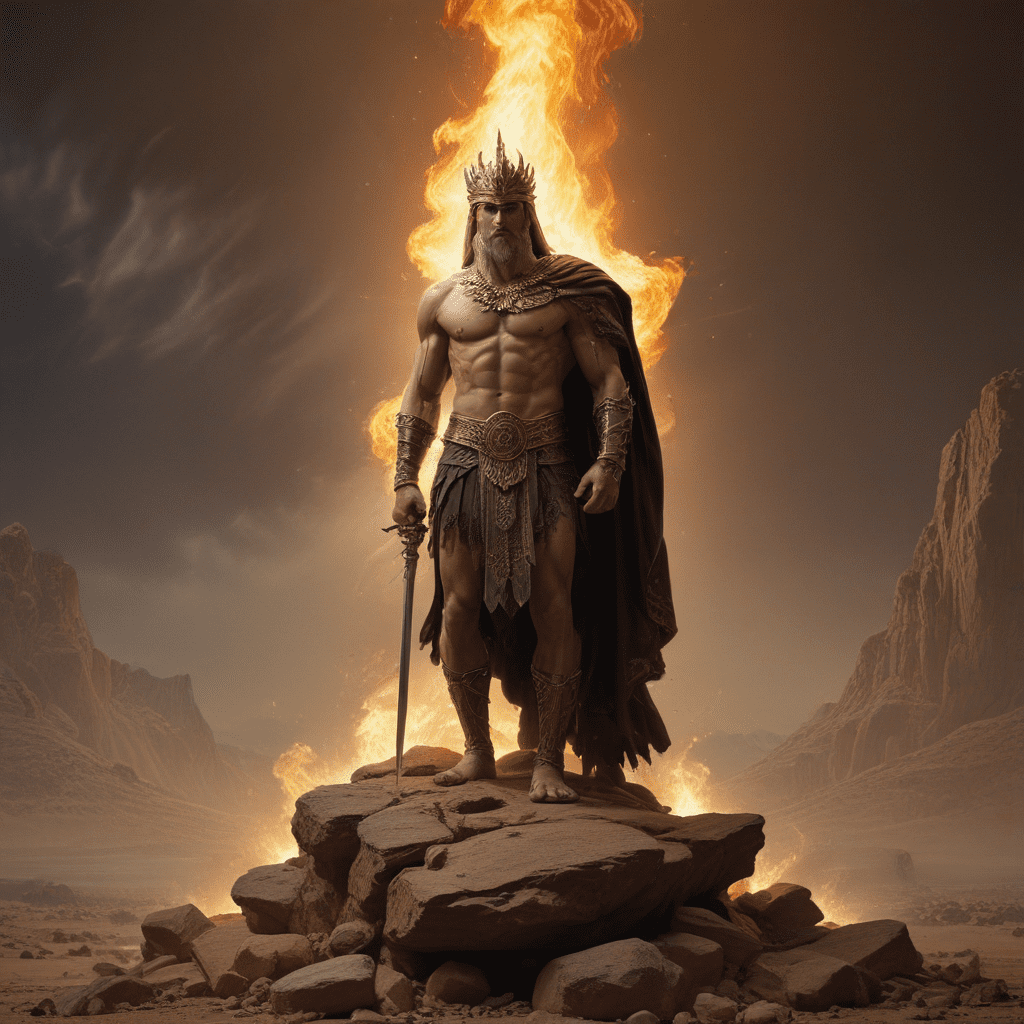The Ring of the Nibelungen: Power and Betrayal in Myth
1. Introduction to the Ring of the Nibelungen
The Ring of the Nibelungen, a cornerstone of Germanic literature, is a mythological epic that intricately weaves themes of power, betrayal, and destiny. This saga not only captivates with its dramatic narrative but also serves as a reflection of the human condition, exploring the depths of ambition and treachery. Its significance within Germanic culture is profound, influencing countless works of art, literature, and music throughout the centuries.
2. Historical Context and Origins of the Myth
The origins of the Ring of the Nibelungen can be traced back to ancient Norse mythology and Germanic traditions. As these stories evolved through oral traditions, they were shaped by the cultural and historical contexts of the time.
- Roots in Norse mythology: The tales of gods, heroes, and mythical creatures laid the groundwork for the Nibelungen saga.
- The Nibelungenlied: This 12th-century epic poem is one of the most significant written accounts of the myth, presenting a detailed narrative of its characters and events.
- The Poetic Edda: This collection of Old Norse poems also contributes to the understanding of the myth’s characters and themes.
3. The Role of the Ring: Symbolism and Significance
The Ring itself is central to the narrative, embodying themes of greed and desire. It is a powerful artifact that brings both fortune and doom to its bearers.
- Description of the Ring’s powers: The Ring grants immense wealth and power to its possessor.
- The curse of the Ring: Those who possess it are doomed to face betrayal and destruction.
- The implications of possessing the Ring: The desire for the Ring leads characters to make tragic choices, often resulting in their downfall.
4. Key Characters and Their Motivations
The saga features a rich tapestry of characters, each driven by their own motivations and desires.
- Siegfried: The hero whose journey is marked by bravery and tragic flaws, ultimately leading to his demise.
- Brünnhilde: The fierce warrior maiden, whose love for Siegfried intertwines her fate with his.
- Hagen: The master manipulator whose betrayal drives the plot towards its tragic conclusion.
- Other notable figures: Gunther, Giselher, and Kriemhild each play critical roles in the unfolding drama.
5. Thematic Exploration of Power
Power is a central theme in the Ring of the Nibelungen, deeply influencing the characters and their relationships.
- The acquisition of power through the Ring: Characters believe that possessing the Ring brings them strength and status.
- The corrupting influence of power: Many characters fall victim to greed, leading to betrayal and conflict.
- Power struggles: Alliances are formed and broken, showcasing the volatile nature of power dynamics.
6. Betrayal as a Central Motif
Betrayal runs rampant throughout the narrative, impacting the relationships and fates of the characters.
- Instances of betrayal: Notable betrayals occur between Siegfried and Hagen, as well as between various members of the royal family.
- Consequences of betrayal: Betrayal often leads to tragic outcomes, including death and destruction.
- Betrayal’s role in the heroes’ downfall: The betrayal of trust ultimately results in the tragic end of the heroic figures.
7. The Influence of the Ring on Fate and Destiny
The concept of fate in Germanic mythology plays a crucial role in the saga, especially regarding the Ring’s influence on its bearers’ destinies.
- The concept of fate: Characters grapple with the idea that their fates are predetermined.
- How the Ring alters destinies: The Ring’s curse changes the course of the characters’ lives, leading them to tragic ends.
- Intertwining of choice and predestination: While some characters make choices, they often find themselves trapped by fate.
8. Adaptations and Interpretations in Modern Culture
The Ring of the Nibelungen has inspired numerous adaptations and interpretations across various mediums.
- Richard Wagner’s operatic interpretation: Wagner’s cycle of operas reimagines the story with grand music and dramatic flair.
- Film adaptations: Movies have portrayed the myth in diverse ways, from fantasy epics to animated features.
- Contemporary references: The themes of power and betrayal resonate in modern literature, art, and popular culture.
9. Comparative Analysis with Other Myths
The themes within the Ring of the Nibelungen find parallels in other mythological narratives from around the world.
- Similarities with Greek mythology: Tales of power and betrayal, such as those seen in the stories of the Trojan War, echo the Nibelungen saga.
- Arthurian legends: Themes of loyalty, betrayal, and the quest for power are prevalent in the Arthurian tales.
- Universal appeal: The Nibelungen saga’s exploration of greed and consequence resonates across cultures and eras.
10. Conclusion: The Enduring Legacy of the Ring of the Nibelungen
The Ring of the Nibelungen remains a powerful narrative that explores the complexities of human nature through its themes of power and betrayal. Its enduring legacy is evident in the countless adaptations and interpretations that continue to inspire audiences today. As a reflection of the struggles inherent in the pursuit of power and the consequences of betrayal, this mythological epic will continue to captivate and challenge future generations.




